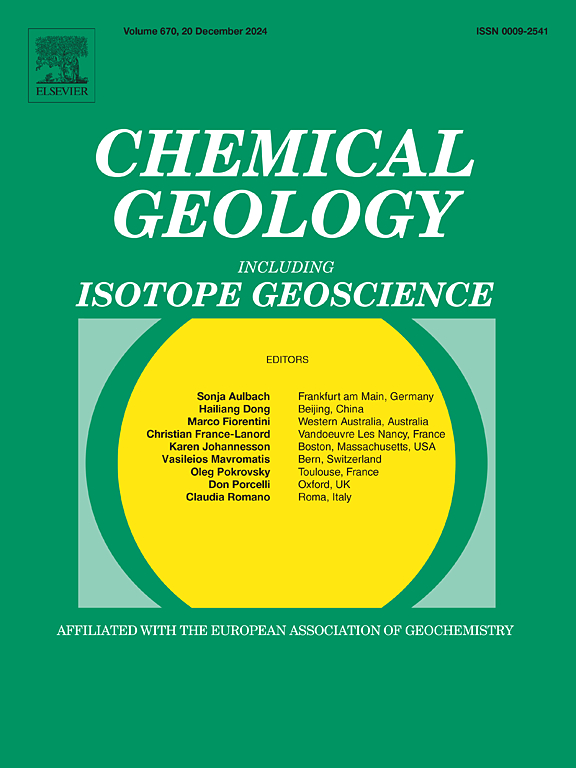通过不溶性有机物的光谱研究对CM母体的热时间约束
IF 3.6
2区 地球科学
Q1 GEOCHEMISTRY & GEOPHYSICS
引用次数: 0
摘要
利用傅里叶变换红外光谱和拉曼光谱对16种不同碳质球粒陨石(CI, CM)中化学分离的不溶性有机物进行了全面研究,以了解CM- CI类体的蚀变持续时间和温度关系。基于无序拉曼光谱(TIOM)的平均温度范围为~35°C至90°C,与先前报道的估计一致。利用已建立的基于不溶性有机质的动力学参数,本研究提出了一种估算CM母体蚀变持续时间的新方法。根据以前的热液模型提出的蚀变持续时间与母体大小之间的相关性,试图将本研究中CM组样品的起源联系起来。我们的大多数样本都属于多个克隆的小型星子的类别,或者是这些物体的集合(碎石堆)的一部分。Ryugu研究的红外和拉曼特征支持我们研究中发现的亲本体型、温度和变化持续时间之间的相关性。此外,我们观察到有机质的变化受变化温度而不是持续时间本身的调节。然而,需要进一步分析以限制影响这些光谱趋势的其他参数的影响,例如水岩比的变化和系统开放程度(基于局部形态的开放/封闭系统)。本文章由计算机程序翻译,如有差异,请以英文原文为准。

Thermo-temporal constraints on CM parent body via spectroscopic study of insoluble organic matter
A comprehensive study was conducted using Fourier Transform Infra-Red spectroscopy and Raman spectroscopy on chemically isolated insoluble organic matter from sixteen different carbonaceous chondrites (CI, CM) to understand the alteration duration and temperature relationships within CM- CI like bodies. The average temperatures based on disordered components of Raman spectra (TIOM), range from ~35 °C to 90 °C which are consistent with previously reported estimates. Using the established kinetic parameters based on insoluble organic matter, this study presents a novel approach to estimate duration of alteration in the CM parent body. An attempt is made to link the origin of the CM suite of samples from this study using the correlation between duration of alteration and parent body size as suggested by previous hydrothermal models. The majority of our samples fall into the category of multiple cloned small planetesimals or were part of an aggregate of these bodies (rubble pile). Infrared and Raman characteristics of Ryugu studies supports the correlation between parent body size, temperature, and the duration of alteration identified in our research. Additionally, we observe that the alteration of organic matter is regulated by the temperature of alteration rather than the duration itself. However further analysis is required to constrain the influence of other parameters that influence these spectral trends such as variations in water-rock ratios and the degree of system openness (open/close system based on local morphology).
求助全文
通过发布文献求助,成功后即可免费获取论文全文。
去求助
来源期刊

Chemical Geology
地学-地球化学与地球物理
CiteScore
7.20
自引率
10.30%
发文量
374
审稿时长
3.6 months
期刊介绍:
Chemical Geology is an international journal that publishes original research papers on isotopic and elemental geochemistry, geochronology and cosmochemistry.
The Journal focuses on chemical processes in igneous, metamorphic, and sedimentary petrology, low- and high-temperature aqueous solutions, biogeochemistry, the environment and cosmochemistry.
Papers that are field, experimentally, or computationally based are appropriate if they are of broad international interest. The Journal generally does not publish papers that are primarily of regional or local interest, or which are primarily focused on remediation and applied geochemistry.
The Journal also welcomes innovative papers dealing with significant analytical advances that are of wide interest in the community and extend significantly beyond the scope of what would be included in the methods section of a standard research paper.
 求助内容:
求助内容: 应助结果提醒方式:
应助结果提醒方式:


